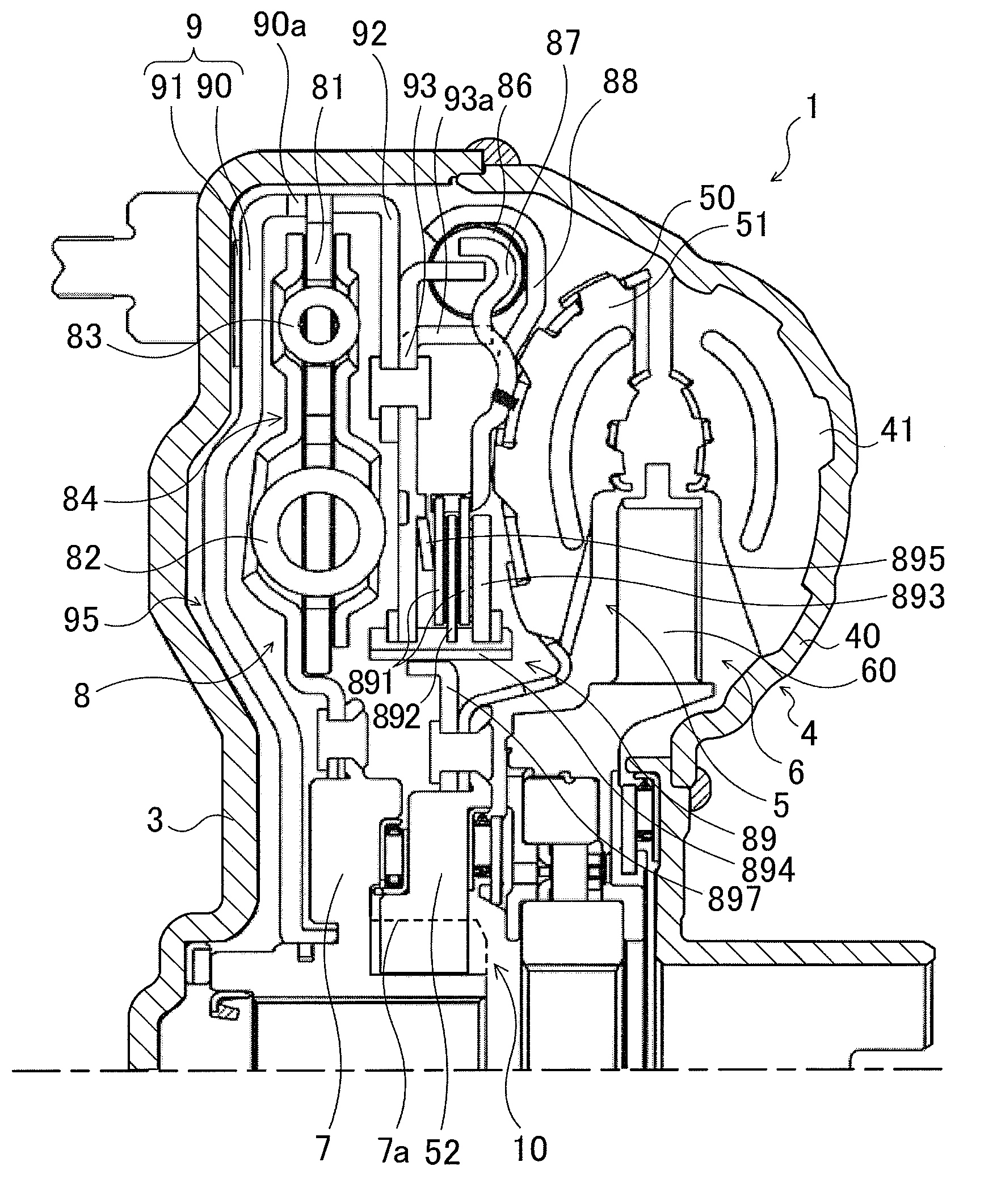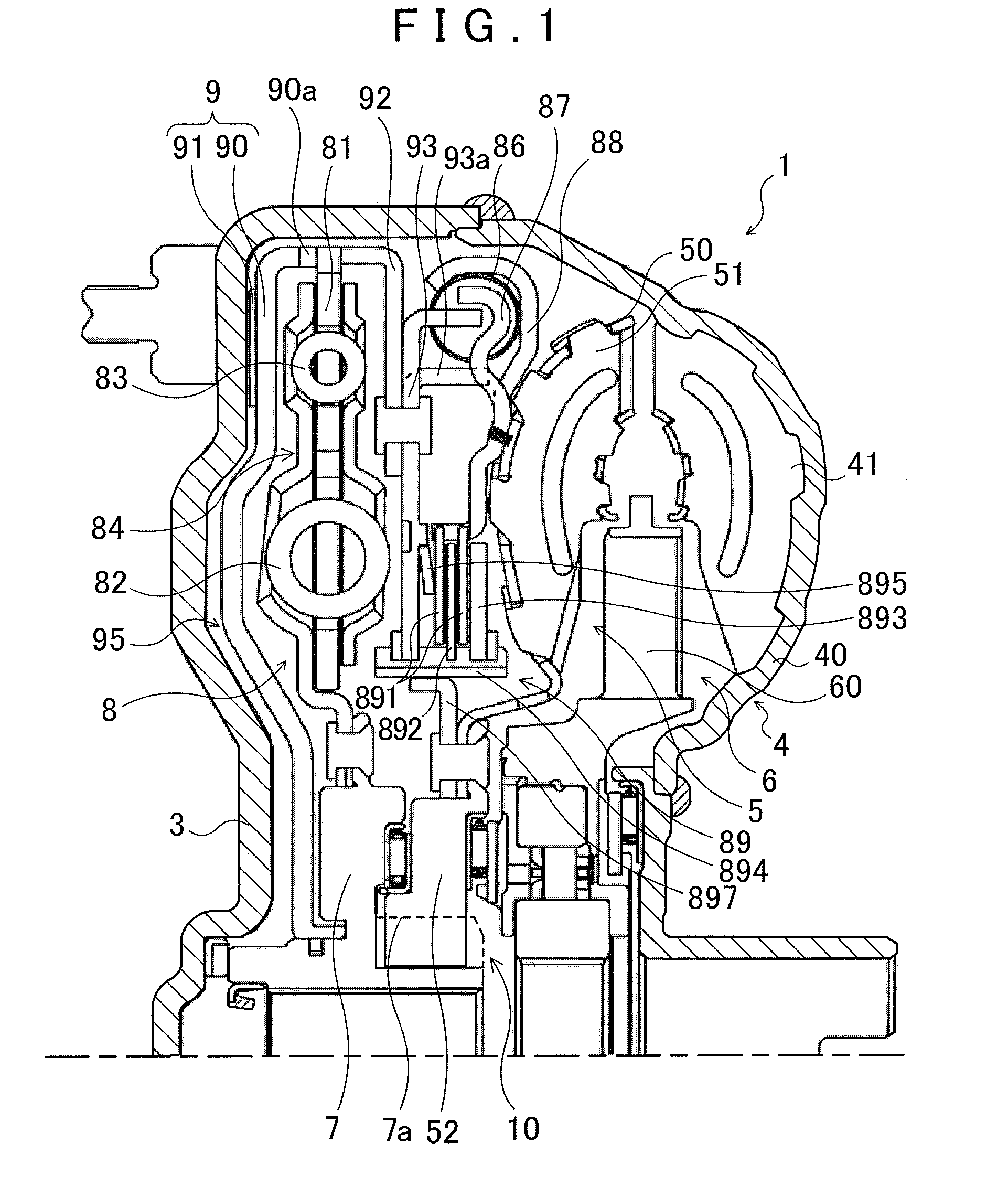Hydraulic transmission apparatus
a transmission apparatus and hydraulic technology, applied in the direction of rotary clutches, fluid couplings, gearings, etc., can solve the problems of reducing the torque of the fluid coupling, and the inability to transmit the torque to the transmission side,
- Summary
- Abstract
- Description
- Claims
- Application Information
AI Technical Summary
Benefits of technology
Problems solved by technology
Method used
Image
Examples
Embodiment Construction
[0022]An embodiment of the present invention will be described below.
[0023]FIG. 1 is a partial cross-sectional view showing a hydraulic transmission apparatus 1 according to an embodiment of the present invention, and FIG. 2 is an enlarged view showing a main part of the hydraulic transmission apparatus 1. The hydraulic transmission apparatus 1 shown in these drawings is a torque converter that is mounted as a starting apparatus on a vehicle including an engine as a motor. The hydraulic transmission apparatus 1 includes: a front cover (an input member) 3 that is coupled to a crankshaft of the engine, not shown; a pump impeller (an input-side hydraulic transmission element) 4 fixed to the front cover 3; a turbine runner (an output-side hydraulic transmission element) 5 capable of rotating coaxially with the pump impeller 4; a stator 6 that straightens a flow of hydraulic oil (working fluid) from the turbine runner 5 to the pump impeller 4; a damper hub (an output member) 7 that is fi...
PUM
 Login to View More
Login to View More Abstract
Description
Claims
Application Information
 Login to View More
Login to View More - R&D
- Intellectual Property
- Life Sciences
- Materials
- Tech Scout
- Unparalleled Data Quality
- Higher Quality Content
- 60% Fewer Hallucinations
Browse by: Latest US Patents, China's latest patents, Technical Efficacy Thesaurus, Application Domain, Technology Topic, Popular Technical Reports.
© 2025 PatSnap. All rights reserved.Legal|Privacy policy|Modern Slavery Act Transparency Statement|Sitemap|About US| Contact US: help@patsnap.com



